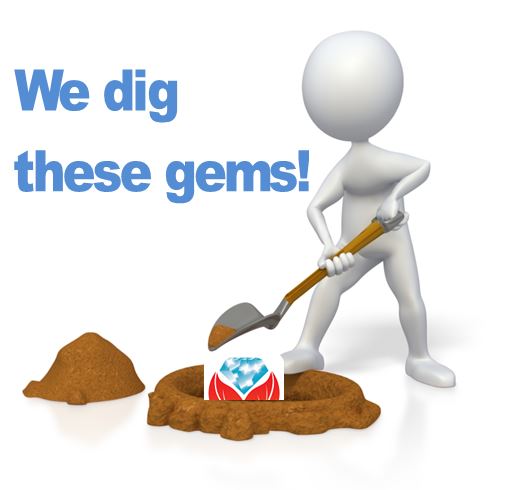How to Find Your Family History in the 1950s
When we try to research our family history from recent decades, we often find privacy barriers: U.S. census records for 1950 and beyond

1950s Fords by Bob P.B. on Flickr Creative Commons. Some rights reserved.
are closed, as are many vital records. Here are some ideas for finding family history in the 1950s and beyond:
1. Interview relatives. The good news is that in many families, there are relatives around who remembers the 1950s. If there’s not, then look to the memories of the next living generation.
Interviewing a relative is one of the most fun and meaningful ways to learn your family history. You can ask specific and personal questions, deepen your relationships with those you interview and gain a better understanding of the lives that led to you. Older people often love to have someone take a sincere interest in them. The free Family History Made Easy podcast episode 2 has a great segment on interviewing your relatives.
2. Read the newspaper. Use newspapers to find obituaries and discover more about daily life, current events, popular opinions of the time, prices for everyday items and more. It’s getting easier than ever to find and search digitized newspapers online, but more recent papers may still be under copyright protection.
Use online resources like to discover what newspapers served your family’s neighborhood, or even whether an ethnic, labor or religious press would have mentioned them. In the US, I always start with the US Newspaper Directory at Chronicling America to search for ALL newspapers published in a particular place and time, as well as the names of libraries or archives that have copies of these papers. Historical societies and local public libraries are also wonderful places to look for newspapers. My book, How to Find Your Family History in Newspapers, teaches readers what to look for in papers and how to locate them online and offline.
3. Search city directories. By the 1950s, most towns and cities published directories of residents, mostly with telephone numbers. I use annual directory listings to track buy generic medication online families from year to year. These might give you your first clue that someone moved, married, separated, divorced or died! I can often find their exact street address (great for mapping!), who lived at the house and sometimes additional information like where they worked, what their job was or who they worked for.
Ancestry.com has over a billion U.S. city directory entries online, up to 1989. But most other online city directory collections aren’t so recent. Look for city directories first in hometown public libraries. Check with larger regional or state libraries and major genealogical libraries.
4. Search for historical video footage. YouTube isn’t just for viral cat videos. Look there for old newsreels, people’s home movies and other vintage footage. It’s not unusual to find films showing the old family neighborhood, a school or community function, or other footage that might be relevant to your relatives.
Use the YouTube search box like you would the regular Google search box. Enter terms like “history,” “old,” “footage,” or “film” along with the names, places or events you hope to find. For example, the name of a parade your relative marched in, a team he played on, a company she worked for, a street he lived on and the like. It’s hit and miss, for sure, but sometimes you can find something very special.
My Contributing Editor Sunny Morton tried this tip. Almost immediately, with a search on the name of her husband’s ancestral hometown and the word “history,” she found a 1937 newsreel with her husband’s great-grandfather driving his fire truck with his celebrity dog! She recognized him from old photos and had read about his dog in the newspapers. (Click here to read her stunned post.) Learn more about searching for old videos in my all-new second edition of The Genealogist’s Google Toolbox, which has a totally updated chapter on YouTube.
Click here to read more about the 1950s U.S. census: when it will be out and how you can work around its privacy restrictions.
We Dig These Gems: New Genealogy Records Online
Every  Friday, we post highlights of fabulous new genealogy records online. Scan these weekly posts for content that may include your ancestors. Use these record types to inspire your own search for similar records elsewhere. And always check out our Google tips at the end of each list: they are custom-crafted each week to give YOU one more tool in your genealogy toolbox.
Friday, we post highlights of fabulous new genealogy records online. Scan these weekly posts for content that may include your ancestors. Use these record types to inspire your own search for similar records elsewhere. And always check out our Google tips at the end of each list: they are custom-crafted each week to give YOU one more tool in your genealogy toolbox.
This week we highlight lots of British records and the WWI era:
UK SCHOOL RECORDS. FindMyPast has posted two new datasets on this topic. British School & University Memorial Rolls, 1914-1918 includes over 58,500 students from prominent UK universities who fought in World War I. And nearly 2 million names have been added to the UK National School Admission Registers & Log-Books, 1870-1914. These cover students in England and Wales, 1870 to 1914. FindMyPast says, “Explore their school records to find their birth date, admission year and the school they attended. You may also be able to discover their parents’ names, father’s occupation, exam results and any illnesses that led to absence from school.”
UK TAX RECORDS. About 10 million records and more than a half million images have been added to England, Westminster Rate Books, 1634–1900 at FamilySearch. According to the site, “This collection contains rate books from various parishes in Westminster City from 1634-1900. The rate books were an assessment of tax that was owed and are an excellent census substitute.” The index comes from FindMyPast, where subscribers can also search this collection.
UK WWI SERVICE RECORDS. Over 4 million records have been added to United Kingdom, World War I Service Records, 1914–1920. “This collection contains World War I service records from 1914-1920,” says the collection description. “It contains records from two publications in the National Archives: WO 363 (War Office: Soldiers’ Documents, First World War “Burnt Documents”) and WO 364 (War Office: Documents from Pension Claims, First World War).”

Google owns YouTube, the world’s most popular online video channel. More and more historical footage is being posted on YouTube, from amateur home movies to rare news footage and more. The search box is your best tool for finding footage of events, places and people, including World War I and II events. Conduct a search with the keywords that best describe what you’re looking for. After that initial search, the Filters button will appear: click the down arrow to reveal more search options and options to sort search results. Click here to see rare video footage I found on YouTube that made my jaw drop–it’s my husband’s great-grandfather, his fire truck and his dog.
